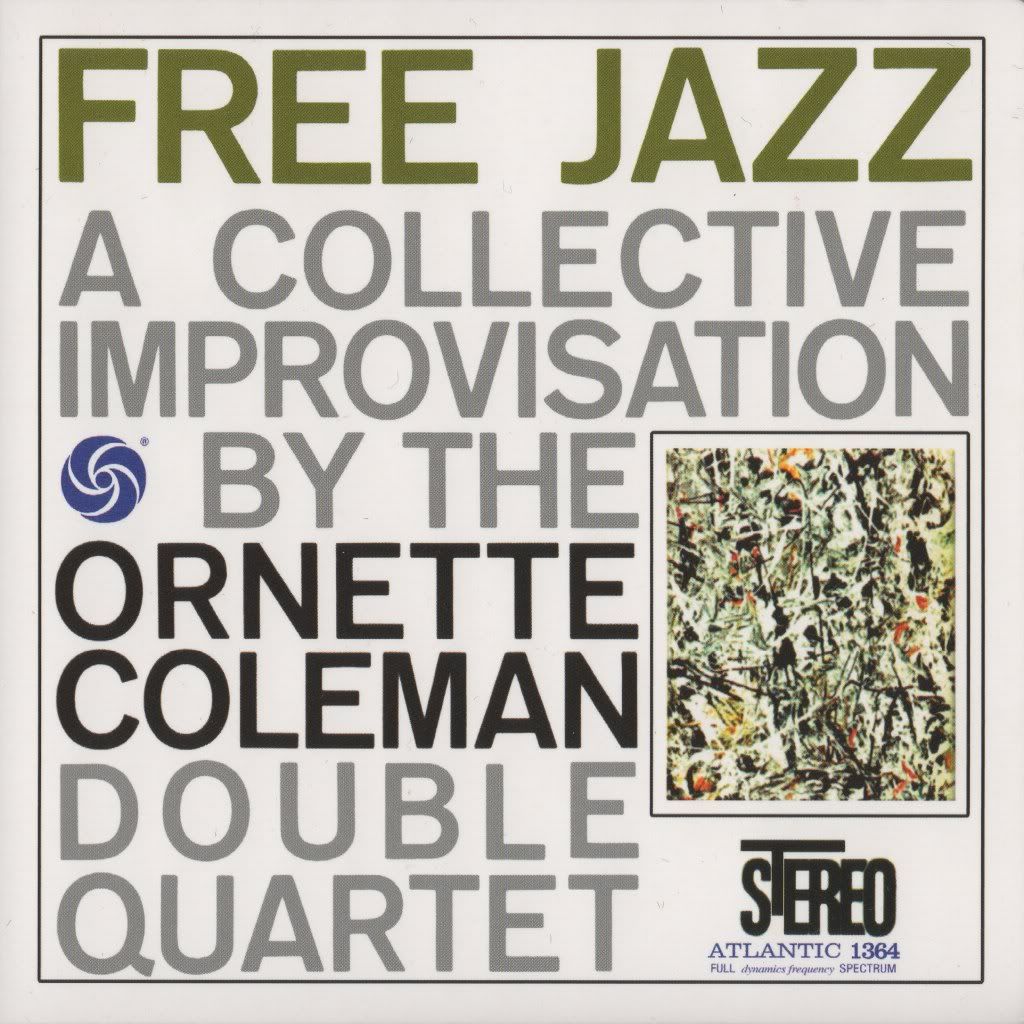This tension between concept and practice is what's most exciting to me about Free Jazz; clearly Coleman thought out the large pieces of the puzzle quite well, but it had still never been done before. He exhorted his side-men to contribute whenever they felt the urge and play as expressively as possible without connections to any recognizable pieces of music or styles, but the end product swings like a mother and Coleman's instructions didn't stop Hubbard from quoting "Jingle Bells" at one point ("don't pour salt in your eyes, don't pour salt in your eyes"). What always captivates me when listening is the range of development in "freeness" that's on display. It's almost like looking at that classic image of human development; Coleman and Dolphy had both already reached a comfortable level of freedom in their playing (which is still extremely melodic [at least in Coleman's case] and fluid if idiosyncratic), and Don Cherry isn't far behind, no doubt aided by his tenure in Coleman's quartet.
Of the horn players, Freddie Hubbard is undoubtedly the weak link in terms of freeness, which might be the most interesting in terms of historical context. His inability to really wrap his brain (and chops) around Coleman's concepts are evidenced in his tentative stop/start soloing which ultimately owes more to the theoretical constraints of bop than any sort of previously uncharted territory (it's particularly evident in the CD reissue "first take" bonus track, where Hubbard's feet are audibly cold and his solo's conventionality comes across as the equal and opposite reaction to the excitement and hurried uncertainty of the song's "first go"). It's funny to hear Dolphy pedagogically prodding at Hubbard during his solo, mimicking the trumpeter's ideas with repeated derangement, throwing in squawking vocalizations and wonky riffs--it's as if he's saying "let it go man, try it like this." Dolphy's accompaniment might be even better than his formidable solo--when he and Hubbard start team-riffing to Ornette's solo, things get really fun, and though his bass clarinet seems to be miked really poorly, the character of his atonal hooting not only accentuates Coleman's soloing, it pours directly into the raucous, party-like atmosphere that's central to this session.
Finally, and in a more meta sense, Free Jazz is a reminder of the areas of "out" and free jazz that had not yet been explored. While Coleman's compositional framework abandons many of the classic tropes, it's also still pretty close to jazz tradition in terms of solo vocabulary (compared with some of Sun Ra's stuff, for example), rhythm (compared with, say, Spiritual Unity), and overall composition--Free Jazz still paints (though in broader brush strokes) a quite clear picture of dedicated solo sections and sometimes leans on obligatory building blocks like the extended bass and drum sections (compared with something like the impressionistic structures of something like Peter Brötzmann's Machine Gun) in a way that suggests automatic impulse in place of a well-considered original idea. These are just historical/theoretical observations, though--people who argue about how Free Jazz isn't really free seem to me to miss the point. It's not about trying to pursue only freedom, but to show how much the jazz idiom opens up to new directions, ideas, and expression of emotion if players and composers start casting off some of the conventions that have become stale. Sure, this album is cacophonous and not always easy listening, but its richness in ideas and energy remain undimmed and helped catalyze a movement that produced some of the most interesting music made in history of jazz.
Get it here


No comments:
Post a Comment